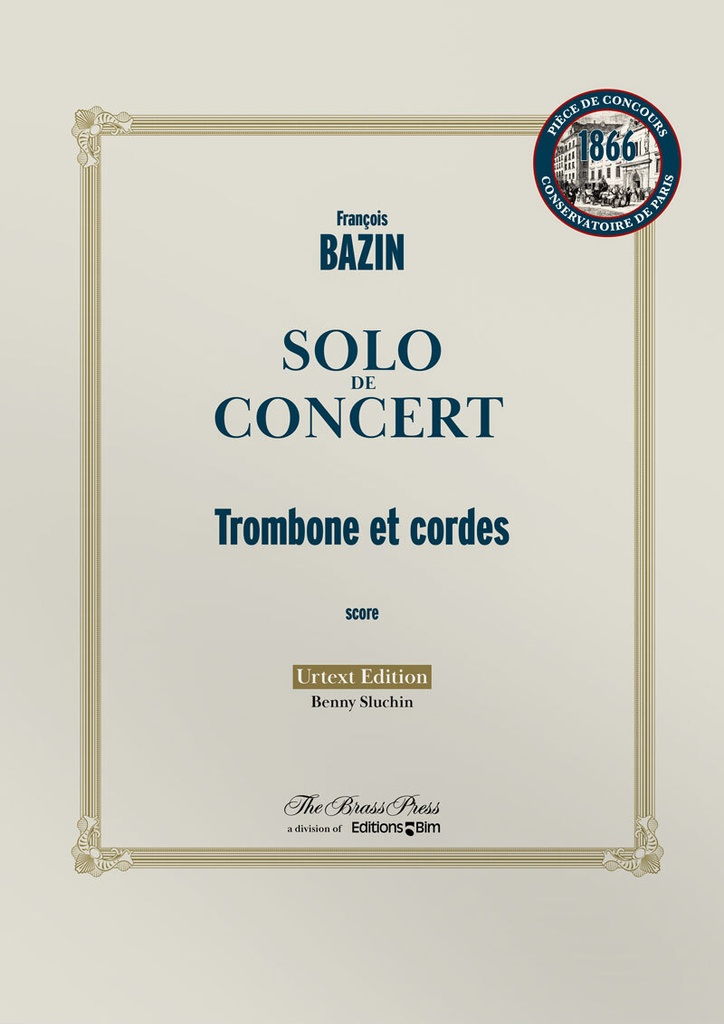Solo de Concert (Set of parts)
Description
François Emmanuel Joseph Bazin was born in Marseille in 1816 and died in Paris in 1878. He entered the Conservatory of Music in Paris in 1836 and studied composition and harmony with Henri-Montan Berton (1767-1844) and Fromental Halévy (1799-1862). He won first prize for harmony in 1836, counterpoint and fugue in 1837 and organ in 1839. In 1840, he was awarded the prestigious Grand Prix de Rome following Gounod (1818-1893).
On his return from Italy, he wrote for the lyric theater, and at the same time held the position of professor at the Conservatoire, in the class of harmony. His course of theoretical and practical harmony (Paris, Escudier) is an example of his pedagogy. Many of his comic operas were successful in his lifetime. He is also responsible for various pieces of sacred and secular music. He became a member of the Institut de France in 1873, and received the distinction of knight of the Legion of Honor.
The Solo de Concert is a particular work, written for the trombone with accompaniment of a string quintet (2 violins, viola, cello and double bass). It is rare to find a competition piece with an accompaniment other than piano. It was composed for the class of valve trombone held by Antoine Dieppo (1857-1870). The Andantino in D minor shows the lyrical, sung side of the trombone. A short cadenza leads back to the first theme. Follows an Allegro moderato in D major showing the military side of the instrument. A second cadenza gives the trombone freedom of expression, before the martial theme leads to the coda.
The use at the Paris Conservatory provided that, beside the competition piece, the candidates had another required work, shorter, and to be sight readed. Generally, the composer of the competition piece wrote also the piece to be deciphered. This is not the case of François Bazin, who composed this short piece for the Competition of 1873.
During the first period of the 19th century, the accompaniment of the sight-reading piece was mostly entrusted to the cello. Later on, the piano gradually took place, depending on the instruments. For the trombone since 1872.
Benny Sluchin
Paris, November 2019
